Last Chance to Catch NYC's Holiday Notalgia Train
We met the voices of the NYC subway on our nostalgia ride this weekend!


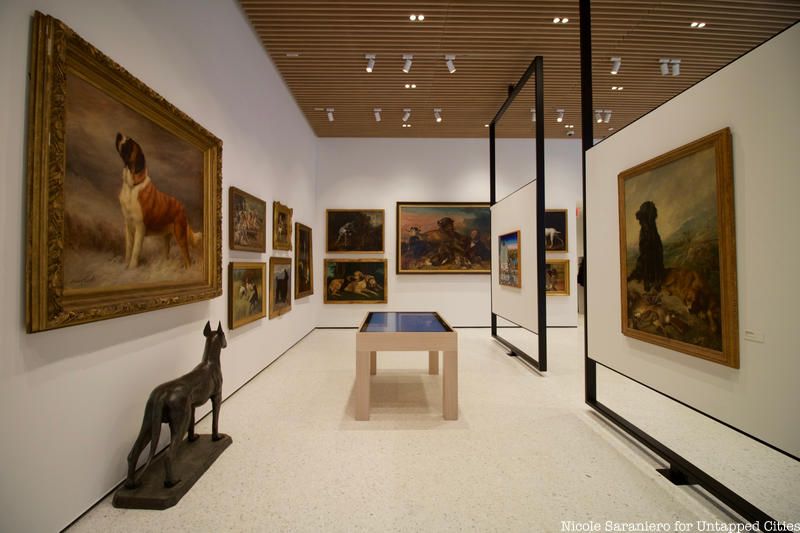
Park Avenue is going to the dogs. This Friday, February 8th, the American Kennel Club will host the grand opening of the brand new Museum of the Dog inside the Kalikow Building at 101 Park Avenue, just steps away from Grand Central Terminal, and yes, there will be real live dogs in attendance! Friday’s opening marks the MoD’s return to New York City after more than thirty years in West St. Louis County. The museum’s first exhibit, For the Love of All Things Dog, combines famous pieces by dog artists like Sir Edwin Landseer and Maud Earl from the AKC’s collection of over 200 works of art featuring man’s best friend (one of the largest in the world), and the collection of paintings, sculptures, and objects that the museum has been amassing since it was founded in 1982. Untapped Cities got a preview of the brand new, hi-tech museum with Alan Fausel, the Executive Director of the AKC Museum of the Dog, and picked out some of the most intriguing items to share!
The museum will be open starting at 11:00am on Friday, February 8th. You can purchase tickets for admission online here.
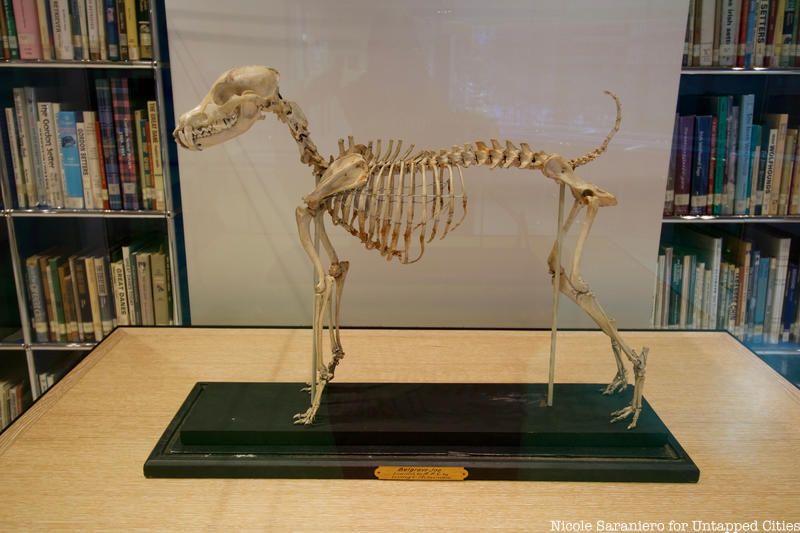
The Museum of the Dog Library has an unconventional mascot, the skeleton of a smooth fox terrier called Belgrave Joe. Joe lived in the 1880s and had a long life of almost twenty years. He was a foundational sire credited with establishing a variety of fox terrier breeds. Joe’s DNA was passed down through multiple generations and led to championship winning dogs. His remains were originally cared for by the Royal Veterinary College in England, but he made his way to the AKC Library in the 1930s and has remained a beloved fixture in the organization ever since. He can now be found in the Museum of the Dog’s library where 4,000 of the AKC’s 15,000 volume collection of books are available for visitors to peruse. There are also interactive digital displays in the library where visitors can learn more about the work of AKC, get information on the organization’s breeders and breeding standards, and find out more of the history of Belgrave Joe. As the museum gets up the running, the library will host public programming such as educational workshops, lectures and presentations.
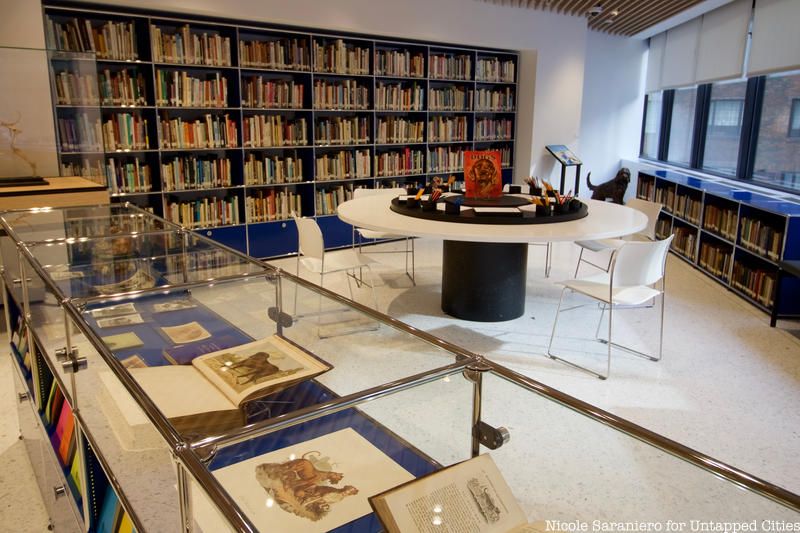
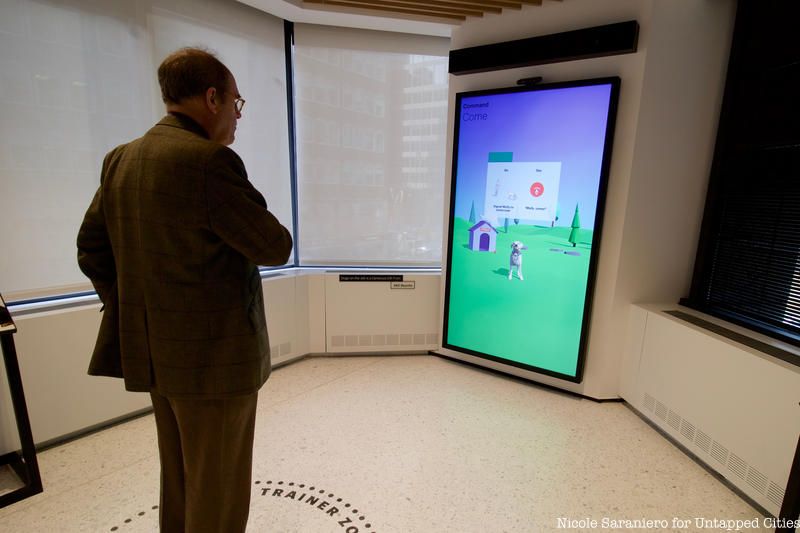
The New York iteration of the MoD has gotten a significant tech upgrade from the St. Louis location which only had analog displays. The new museum features six interactive digital stations including multiple Meet the Breeds stations where, using a touch screen table, visitors can review information on all 193 recognized breeds. At another station, visitors can find out what type of dog they most resemble. Perhaps the most exciting interactive station is the Trainer Zone in the Dogs on the Job exhibit. Fausel demonstrated for us how visitors can practice training a virtual service dog by standing in front of a full length screen. Visitors can speak commands and use hand signals to interact with a digital labrador on the screen who will listen to commands like sit, fetch and speak and can be rewarded with a treat. To create this activity the museum captured footage of a real life retriever wearing a motion capture suit.
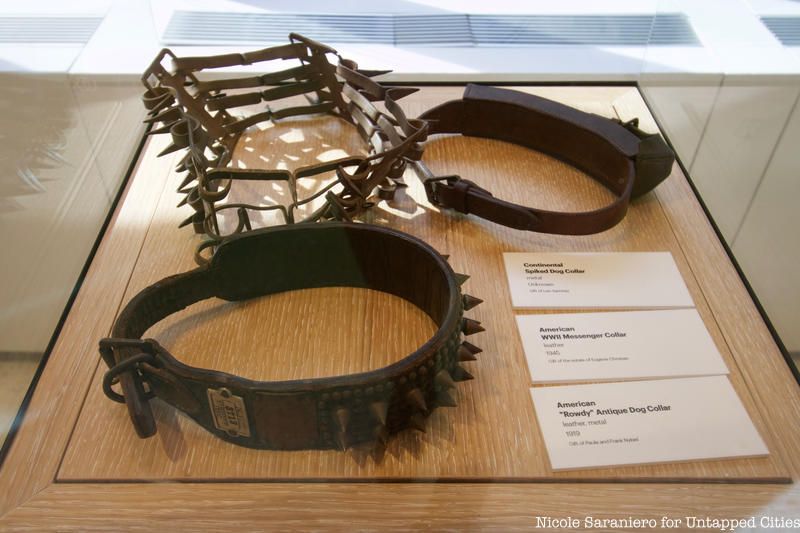
Before spiked collars were adopted as a punk fashion trend, they served a practical purpose dogs. The spikes on dog collars were meant to protect a dog’s neck while he was out chasing wild game. Nowadays spiked collars are largely decorative, simply carrying out the tradition of those worn by hunting dogs. At the museum you can see different versions of dog collars through the decades including a messenger collar from WWII.
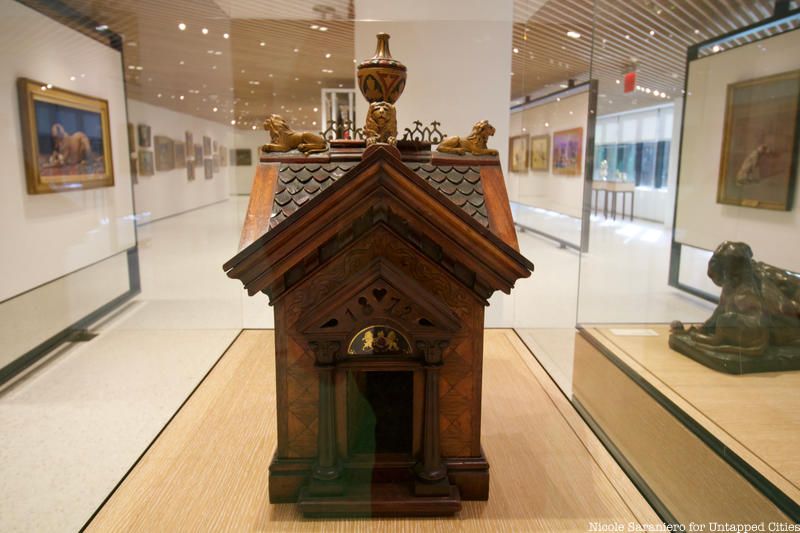
Getting sent to the doghouse wasn’t such an unpleasant experience for whatever dog had these digs made for him. This elaborate Edwardian-style dog house from 1872 was built for a lucky little Chihuahua. You can find it on the second floor with other objects such as trophies (one designed by Tiffany!), a victorian dog carriage, and more sculptures. To make the most of the museum’s exhibits, visitors can download the MoD’s phone app which will give more information about the items on display. Kids can use the app to go on a scavenger hunt with Arty, a virtual canine tour guide.
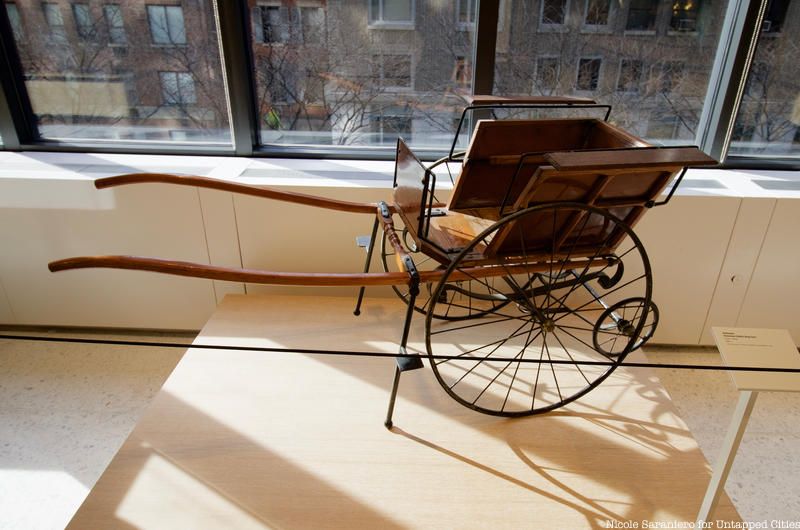
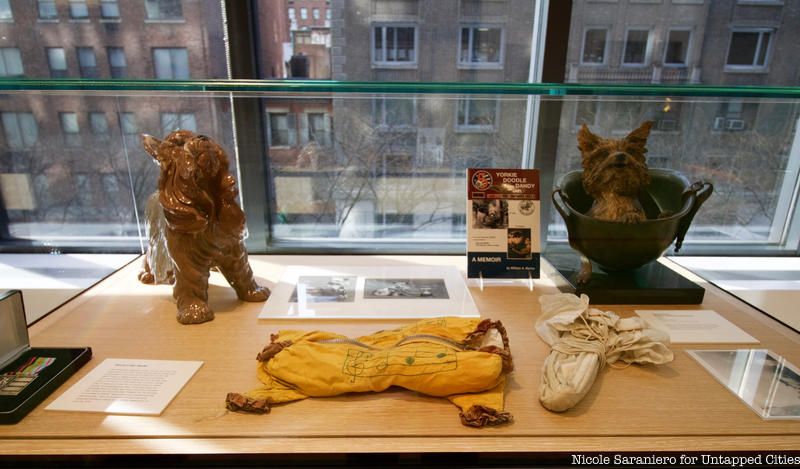
Smoky, a tiny Yorkshire terrier, had a big impact on soldiers who served in World War II. Discovered by her owner American solider William Wynn in 1944 in the jungles of Papua, New Guinea, Smoky played an important role on the battlefield and off. One of Smoky’s biggest contributions to the war effort was successfully dragging a telecommunications cable through a 60-foot-long, eight-inch-wide tunnel. Wynn kept Smoky by his side for multiple flying combat missions and took her with him when he got sick and was sent to the hospital. Smoky was allowed to stay at his bedside and even go along with the nurses as they made rounds. Her presence, and the tricks Wynn had taught her to perform, cheered up the other injured soldiers and made her one of the first therapy dogs on record. At the museum, you will find a memorial to Smoky that includes one of her medals from the Australian Defense Force Tracker and War Dog Association and a parachute used in Wynn’s successful stunt to have Smoky named “Best Mascot in the South West Pacific Area.”
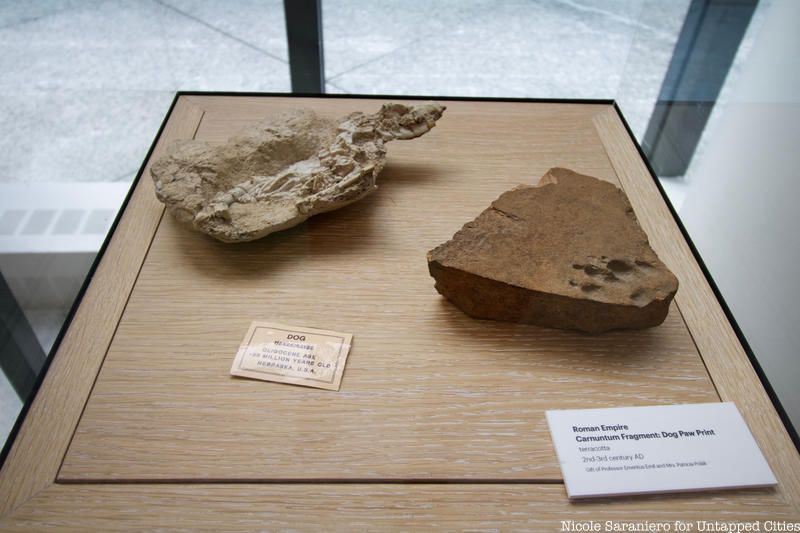
The oldest item in the museum’s collection dates back 30 million years! The fossilized remains of a Hesperocyon, an early dog like mammal, were found in Nebraska. The animal that these bones belonged to probably looked more like a meerkat than any breed of dog we would recognize today. Along with the fossil, guests can also see a paw print in terra cotta from the Roman Empire which dates back to the 2nd-3rd century.
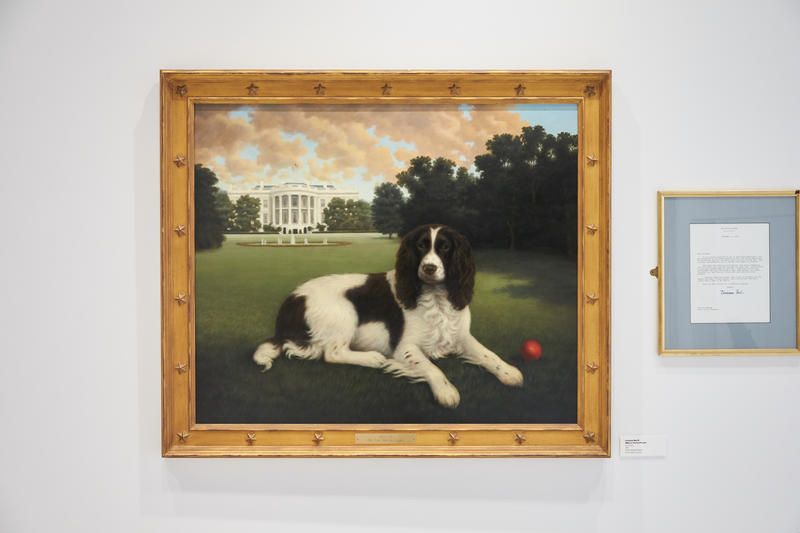
Photograph by David Woo, American Kennel Club
Pet portraiture gained popularity during the mid-1800s thanks in part to Queen Victoria, a British sovereign who loved to have portraits painted of her dogs. The trend made its way across the pond to America continued to be a popular trend through the 1940s. A selection of paintings from the AKC’s extensive collection now hang in the double-height first floor gallery of the MoD, where architects designed displays that can swivel and move to easily adjust to accomodate different exhibits. One of the highlights visitors can see in this gallery is a portrait of Millie, a former first dog, lounging on the south lawn of the White House. Millie, an English springer spaniel, belonged to George H. W. Bush. The portrait in the MoD was painted by Christine Merrill and is accompanied by a letter written by former first lady Barbara Bush to the American Kennel Club on the importance of dogs. The museum also has portraits of pets who belonged to President George W. Bush as well.
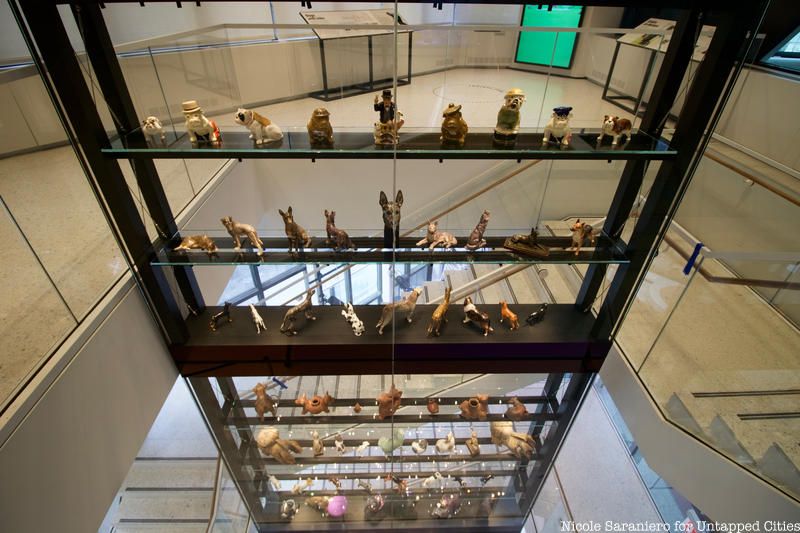
Stretching from the first floor to the third, through the museum’s winding stairwell, is a glass case full of porcelain and bronze dog figurines. As you ascend from the first floor of the gallery to the next, you will see figurines in a range of shapes and sizes ranging from realistic to artfully whimsical. At the bottom of the case, AKC TV has set up shop to where they will shoot special segments for the Club’s 24-hour television station.
The museum will be open starting at 11:00am on Friday, February 8th. You can purchase tickets for admission online here.
Next, check out Meet the Adorable Dogs of the K9 Unit That Protect Amtrak at Penn Station and Cities 101: How Do Dogs Become MTA Police Officers?
Subscribe to our newsletter